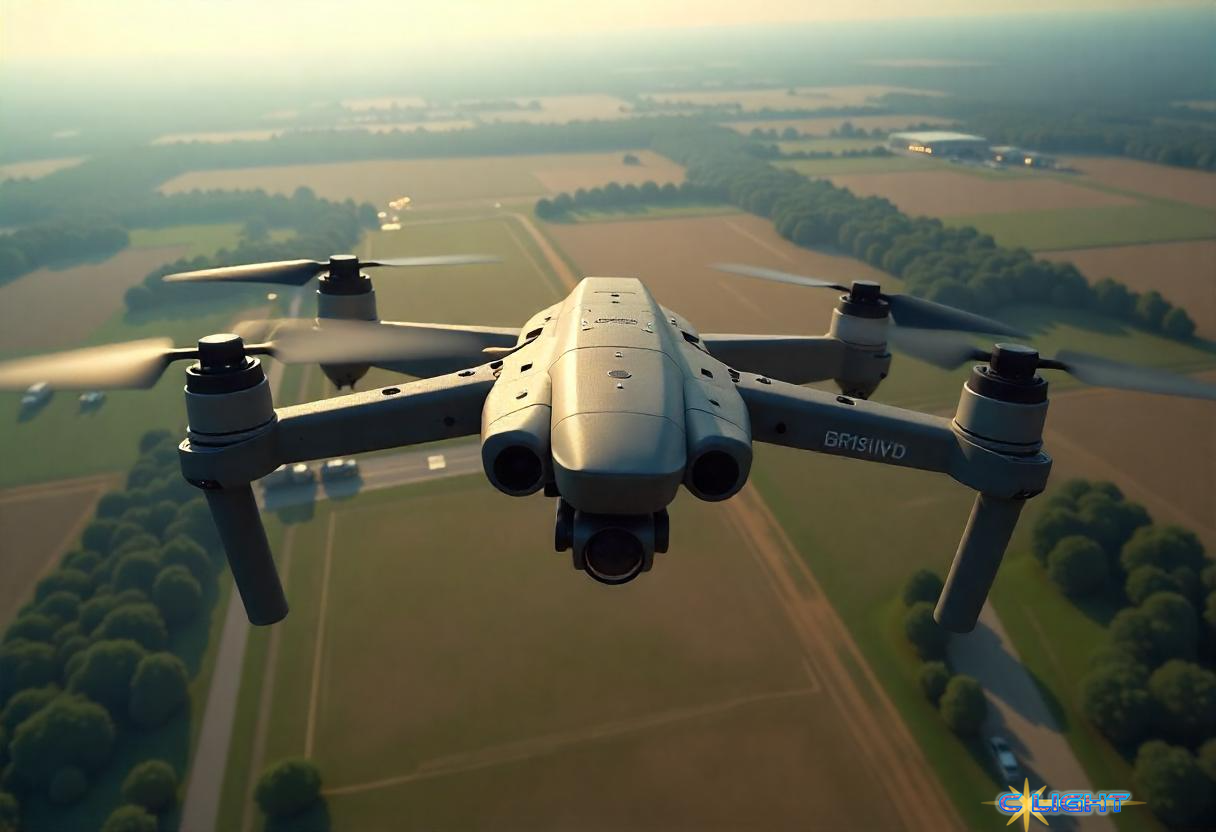A daring Ukrainian drone offensive, reportedly codenamed “Project Spiderweb,” has struck deep into Russian territory, targeting strategic air bases as far as Siberia and signaling a potentially profound shift in modern warfare. The coordinated attacks, allegedly involving over a hundred inexpensive, explosive drones launched from unconventional platforms like semi-trucks, have not only inflicted tangible damage on prized Russian military assets but have also sent shockwaves through global defense establishments, forcing a reckoning with the rapidly evolving capabilities of unmanned aerial vehicles (UAVs).
The operation, described by some as among the “great raiding parties of military history,” combined old-fashioned sabotage with the iconic weapon of the current conflict. According to reports, the attacks were months, possibly even a year and a half, in the making, with drones smuggled into Russia and concealed near key installations before being remotely activated. This highlights a new dimension of threat, where proximity and covert deployment can bypass traditional perimeter defenses.
Assessing the Damage: Claims and Verifications
Ukraine’s security service, the SBU, initially claimed the operation hit 41 aircraft, with 12 destroyed, and caused wreckage totaling $7 billion. Targets reportedly included crucial assets like the A-50 surveillance aircraft (of which Russia has very few operational), and strategic bombers such as the Tu-95, Tu-22M3, and Tu-160, which are central to Russia’s long-range strike and nuclear capabilities. The loss of even a single A-50 would be a significant blow, while disabling strategic bombers directly impacts Russia’s power projection.
Independent analysis of satellite imagery and verified video, as reported by The Washington Post and other open-source intelligence analysts, has begun to paint a more detailed, albeit somewhat more conservative, picture of the aftermath. While not fully aligning with the highest Ukrainian claims, the verified damage is nonetheless substantial. At least 13 aircraft were confirmed damaged across various locations.

At the Belaya air base in the Irkutsk region, some 3,400 miles from Ukraine, synthetic aperture radar (SAR) imagery indicated damage to at least eight aircraft, including Tu-95 and Tu-22 bombers. Will Goodhind, a geospatial analyst, emphasized the significance of these losses, noting that Soviet-era Tu-95s “are no longer in production and cannot be replaced,” with Russia estimated to have only around 50 operational. Drone footage from the Olenya air base on the Kola Peninsula reportedly showed damage to four Tu-95s and an An-12 transport aircraft.
However, satellite imagery of other targeted bases, such as Ivanovo and Dyagilevo in western Russia, showed no significant aircraft damage, suggesting some strikes may have been repelled or missed their primary targets, as the Russian Ministry of Defense asserted in part.
A Paradigm Shift: Cost, Vulnerability, and Reach
The “Spiderweb” attacks starkly illustrate what experts are calling a “new missile age.” The core of this shift lies in the dramatic inversion of the cost curve: relatively cheap, easily assembled drones, potentially “slapped together in a trench or garage,” are proving capable of threatening or destroying multi-million, or even billion-dollar, military hardware like nuclear-capable bombers. Aaditya Devarakonda, CEO of Dedrone by Axon, told Axios, “The real challenge isn’t just detecting these threats; it’s accepting that we’re now operating in an environment where attackers can spend hundreds to destroy billions of dollars of equipment.”
This asymmetry exposes the vulnerability of concentrated, high-value assets. For decades, air power doctrine often involved consolidating forces at fewer, larger bases. As The Economist notes in light of Britain’s latest defense review, such a posture now looks like a mistake. The review itself calls for the Royal Air Force to relearn dispersal and for a broader societal resilience, recognizing that the battlefield now stretches far beyond traditional front lines.
The Ukrainian operation demonstrates that “almost everything is in range.” If operatives can penetrate deep into a country like Russia, it raises serious questions for global security. The concept of “shipping container subterfuge,” once a niche concern, is now a tangible threat, with implications for how nations view commercial transport and a myriad of other civilian infrastructure that could be exploited.

Global Implications and the Need for Adaptation
The success of “Spiderweb” serves as a critical lesson learned, with military analysts worldwide scrutinizing its execution and implications. “This puts to bed the ‘well, Ukraine is a very specific use case’ argument,” Dan Magy of Firestorm Labs told Axios, highlighting how drone technology unleashes creative and disruptive mission possibilities. George Barros of the Institute for the Study of War called the operation “very impressive from a military-science perspective…really pushing the boundaries on what we think is possible.”
Western nations are grappling with these new realities. Britain’s defence review, for example, acknowledges that “emerging technologies are already changing the character of warfare more profoundly than at any point in human history.” It calls for faster, more agile procurement—earmarking 10% of the budget for novel technologies—and a shift towards hybrid forces, such as the Royal Navy’s plan for carrier air wings combining sophisticated drones with F-35s, and the Army’s proposed 20-40-40 mix of crewed, uncrewed reusable, and consumable platforms.
However, as The Economist points out, adapting to this new era requires significant investment. While acknowledging the continued relevance of traditional heavy equipment like tanks and submarines, the financial commitment to both maintaining these and developing new, agile capabilities poses a substantial challenge for many NATO countries.
While Russia retains significant offensive capabilities, including ballistic missiles and its own drone arsenal, Ukraine’s “Spiderweb” operation has undeniably demonstrated a potent new form of asymmetric warfare. It underscores a fundamental collapse of traditional defense thinking, demanding urgent adaptation in strategy, procurement, and force posture globally. The age of the drone is not just dawning; it has emphatically arrived, changing the calculus of conflict from the front lines to the deepest rear echelons.
Discover more from Clight Morning Analysis
Subscribe to get the latest posts sent to your email.










